Art Beat: Stuart Powers gives paintings new life with quirky, kitschy re-imaginings
The artwork of Stuart Powers is knowingly kitschy, teasingly tacky, sublimely schlocky and lovingly lowbrow. And it’s a hell of a lot of fun.
The East Providence artist buys original paintings and reproductions at flea markets, yard sales and from the bins at places such as Savers and the Salvation Army. He then engages in “overpainting,” the practice of altering a preexisting work, by inserting (and sometimes subtracting) visual elements, subverting the intention of the original maker and infusing the work with new meaning.
This method of working has existed for decades and is often dismissed as naive, amateurish or just distasteful. But it should be noted that a number of celebrated artists including English street artist Banksy and German painter Gerhard Richter have indulged in the practice.
In “Stu (Ruins) Art: Discarded Work Gets a New Life,” on display at the HeARTspot Art Center and Gallery in East Providence, Powers reimagines sleepy fishing villages, bucolic landscapes and cafe sidewalks as stomping grounds for kaiju, dinosaurs, and six-armed antennaed pale green creatures.
Being respectful of the efforts of the original artists, Powers always honors them by leaving in their signatures or initials if they appear on the surface of the work.
A recurrent character appears in the vast majority of the paintings. It is a tiny teddy bear in a striped blue-and-white shirt. Powers created the bear as a nod to his young grandson, who was having anxiety nightmares and he advised the boy to imagine giving an ice cream cone to the dream monsters, making peace with the beast, as a coping mechanism.
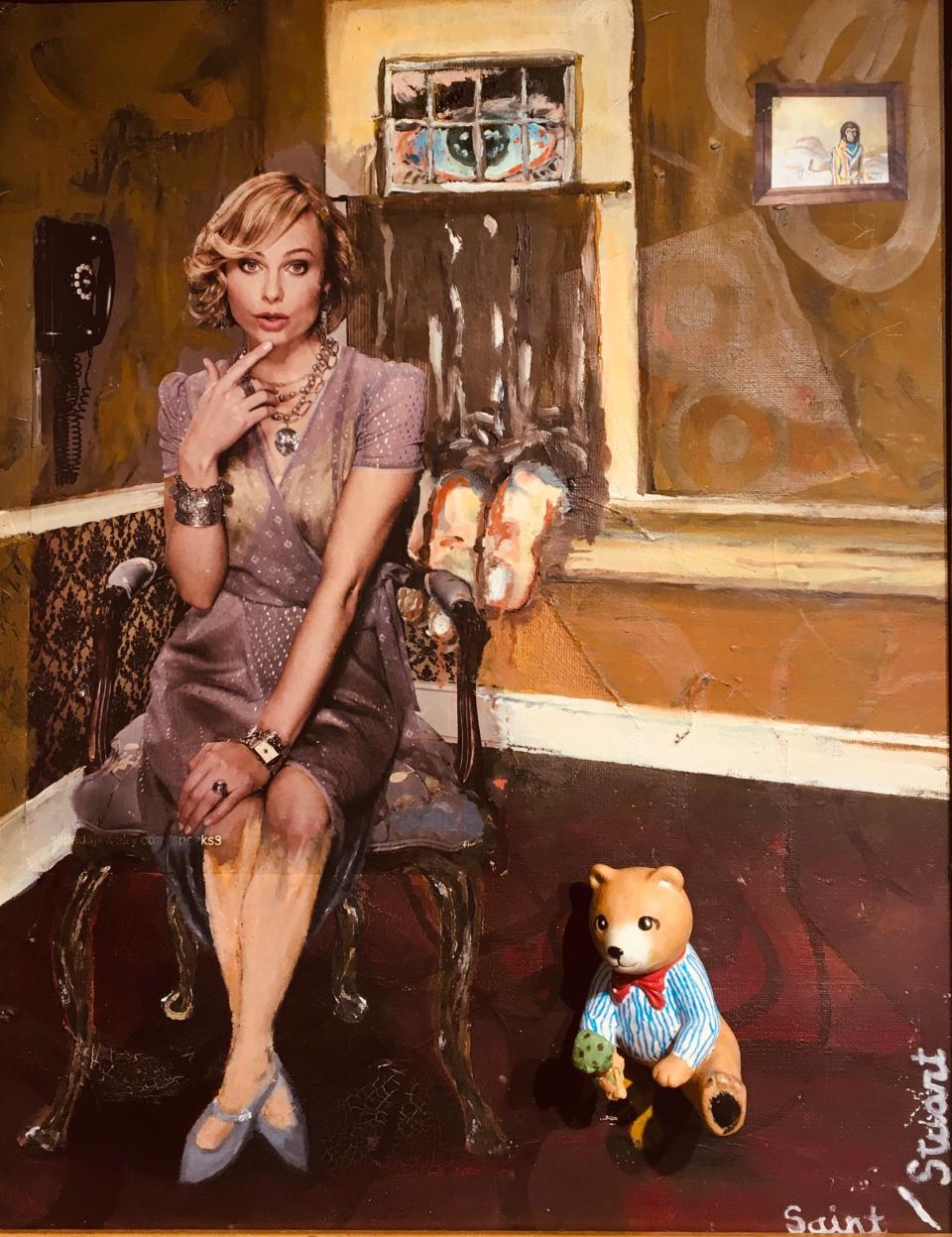
All of the work in the exhibition is untitled and virtually all of them tap a pop culture sensibility.
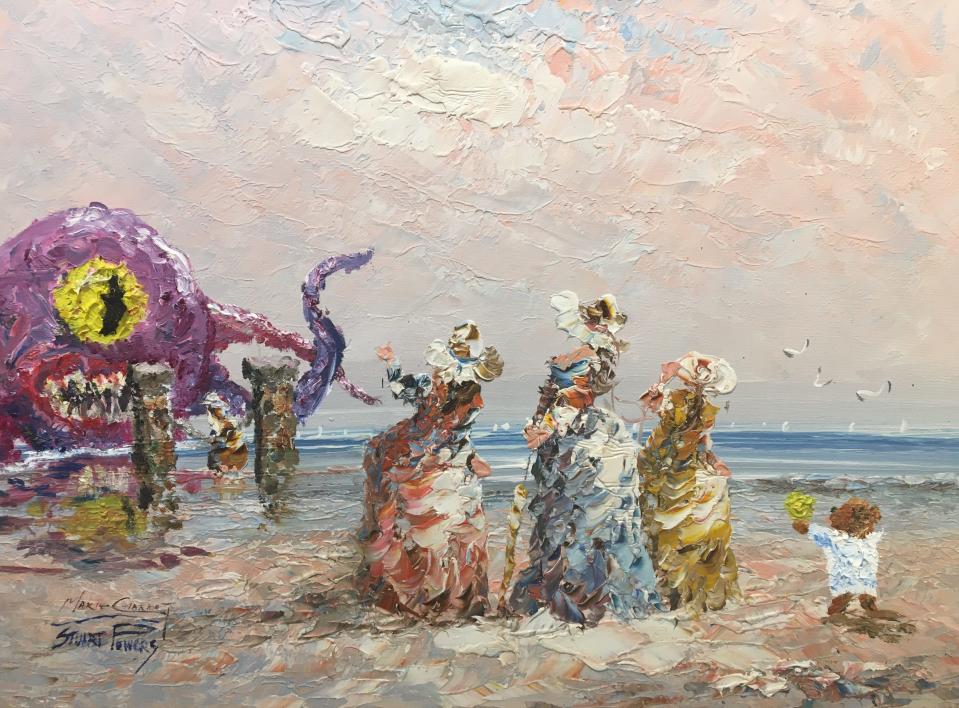
There is a painting of three women in long dresses and wide brimmed hats, one holding a sunbrella, with seagulls in the distance. The original artist did it in an impressionist style, using a palette knife much like Monet or Cezanne.
Powers, utilizing the same painting tool, pops a one-eyed purple people-eater, with a set of ferocious fangs and a probing squid-like tentacle into the water, staring back at the ladies just a few feet away. Behind them, the tiny bear offers up an ice cream cone.
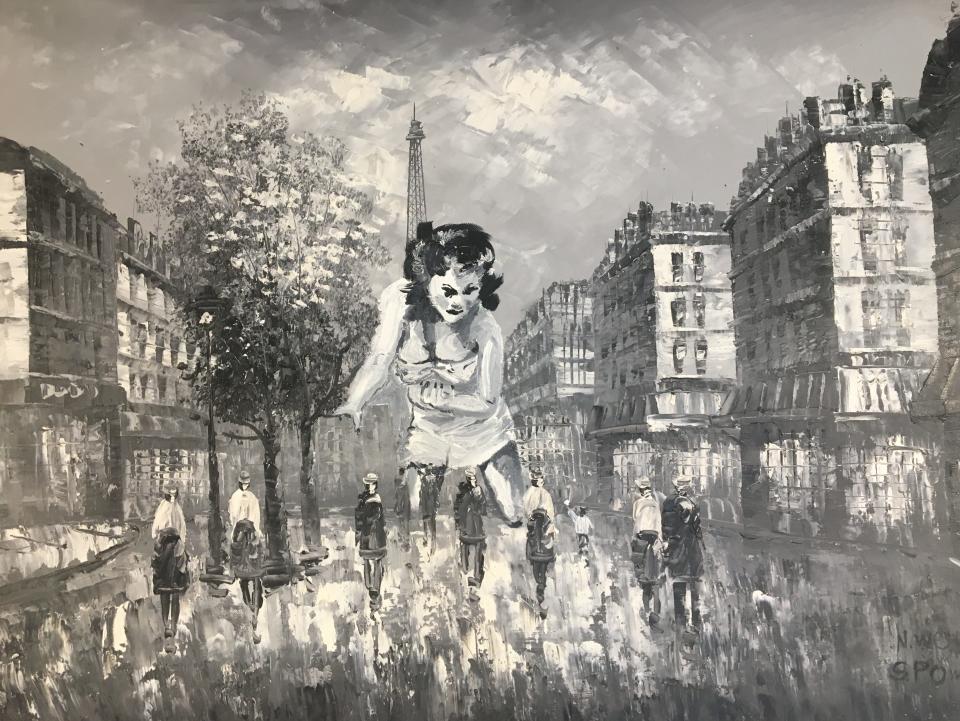
In a black-and-white city painting, of what was likely started as a peaceful moment of strollers on a quiet boulevard, Powers has inserted an old-school sci-fi threat, the title character from the 1958 movie “The Attack of the 50 Foot Woman.” The ice cream cone teddy bear tries to befriend her.
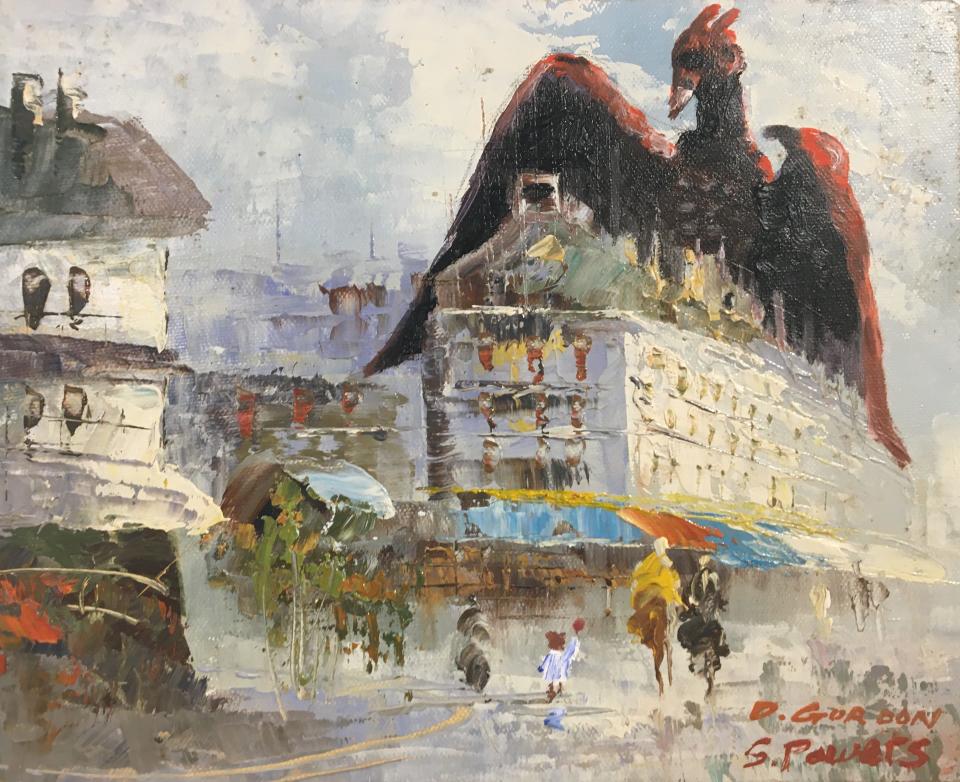
In yet another city, a giant pterosaur, perhaps the Japanese movie monster Rodan, engulfs a multi-storied building.
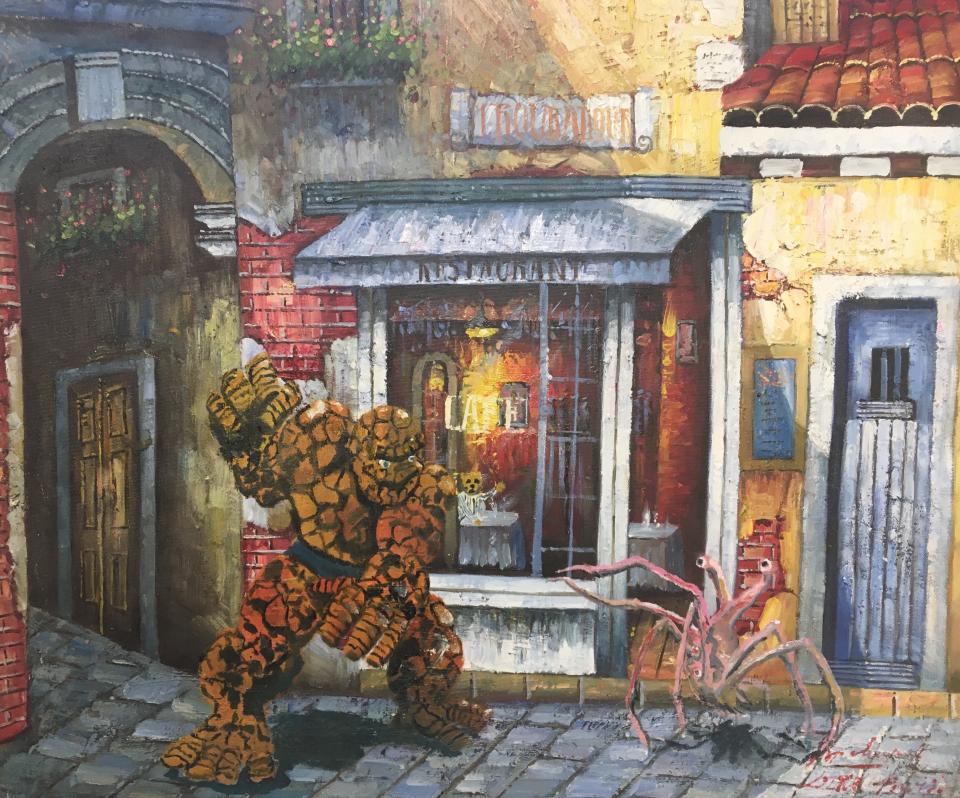
The teddy bear offers an ice cream again; as he does often, whether he’s trying to placate the screaming man from that famed Munch painting, a giant barbarian and tentacled monster behind an indifferent boy, two battling Things (one from a John Carpenter movie, the other from Marvel Comics’ Fantastic Four) and even a tidal wave that threatens to wash away the city of Providence.
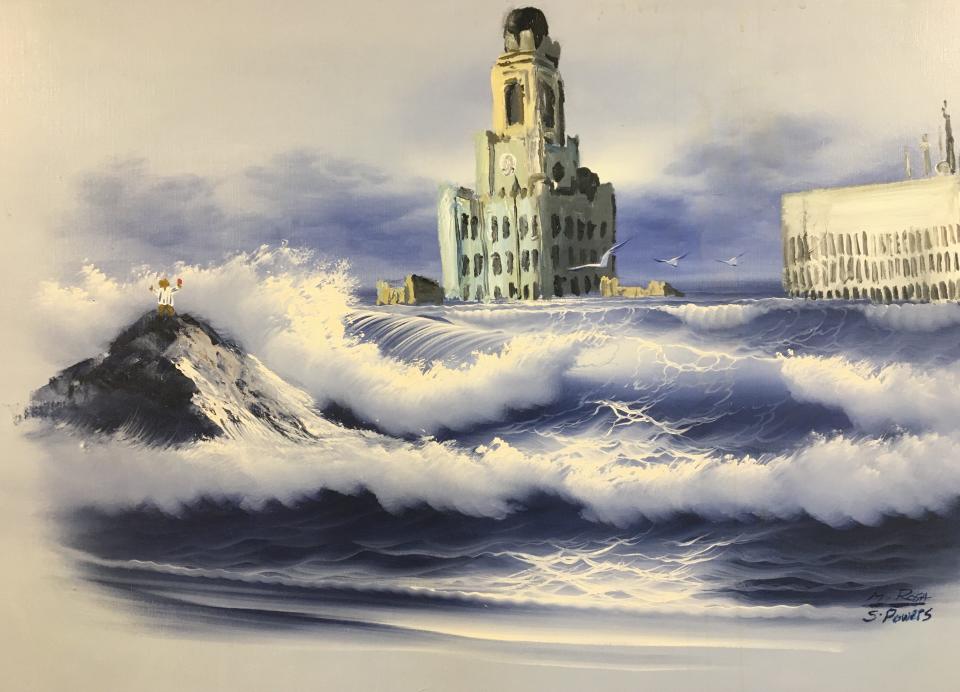
The teddy bear doesn’t always succeed in his pacification efforts. In another painting, he is in the grip of a flying pink pterodactyl, as goofy-looking as Pterri from “Pee-wee’s Playhouse.” In another work, the corners of the frame still wrapped in the yellowed paper that was on it in the thrift store, a too-cute little white dog has sprouted devil horns and the familiar blue-and-white striped shirt dangles from his mouth.
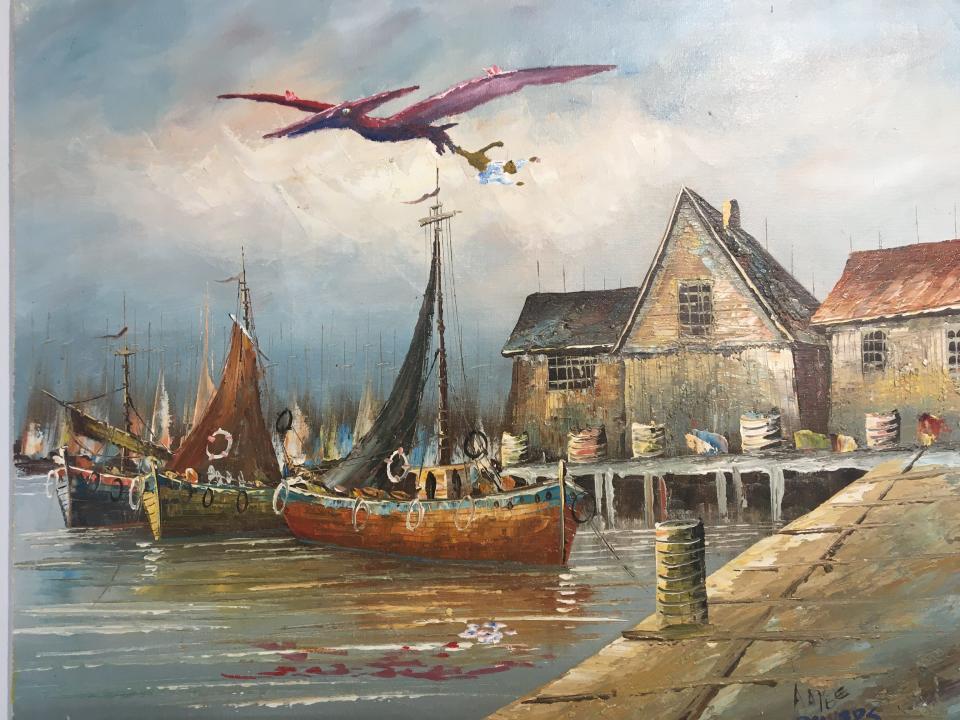
“Overpainting” in this type of context is defined as changing a picture by painting additional parts over the original surface. Some refer to this as “pentimento,” the Italian word for repentance, from the verb “pentirsi,” to repent.
But there is no need to repent. Just enjoy.
“Stu (Ruins) Art: Discarded Work Gets a New Life” is on display at the HeARTspot Art Center and Gallery, 1970 Pawtucket Ave., East Providence. Open Saturdays from noon to 4 p.m., and by appointment at 401-383-7577.
This article originally appeared on The Herald News: Art Beat visits Stu (Ruins) Art at HeARTspot Art Center and Gallery

